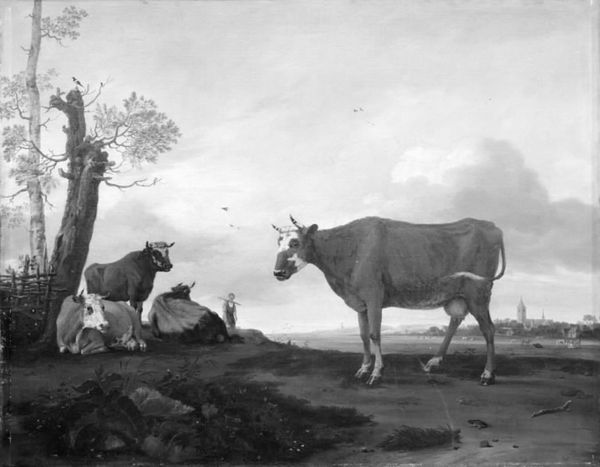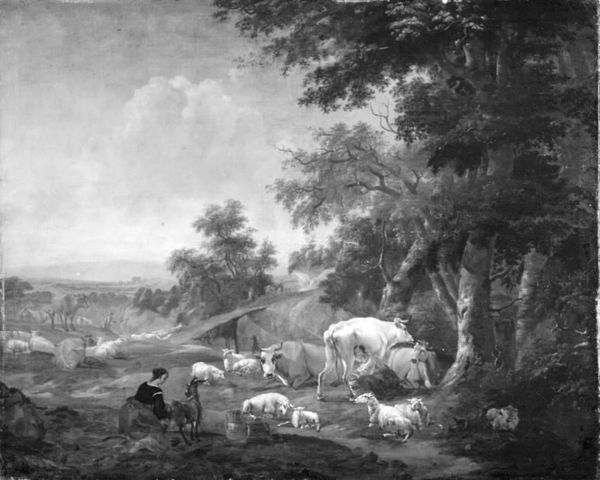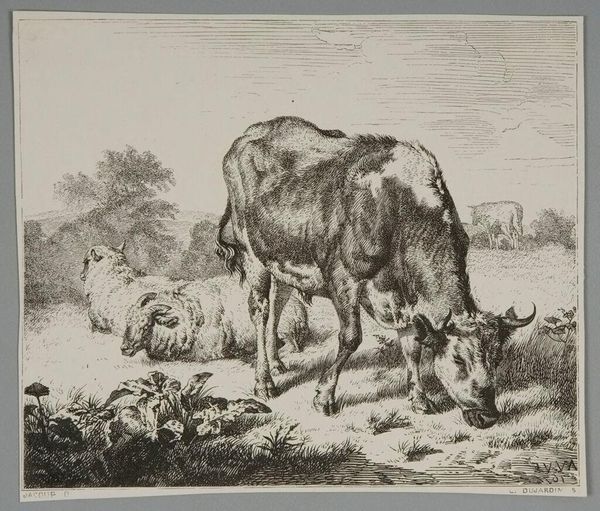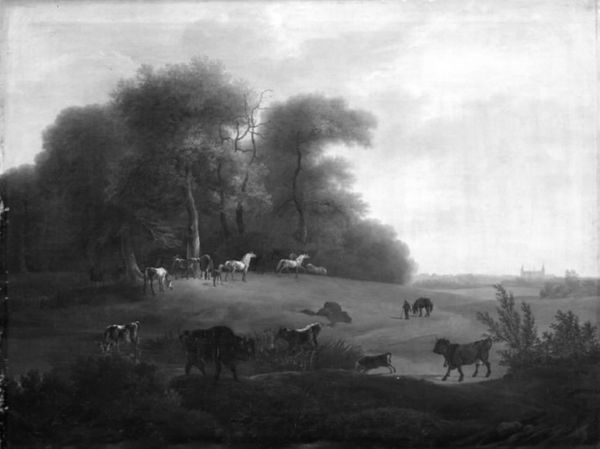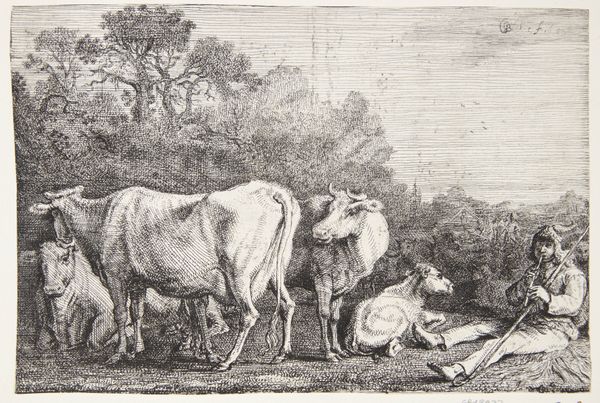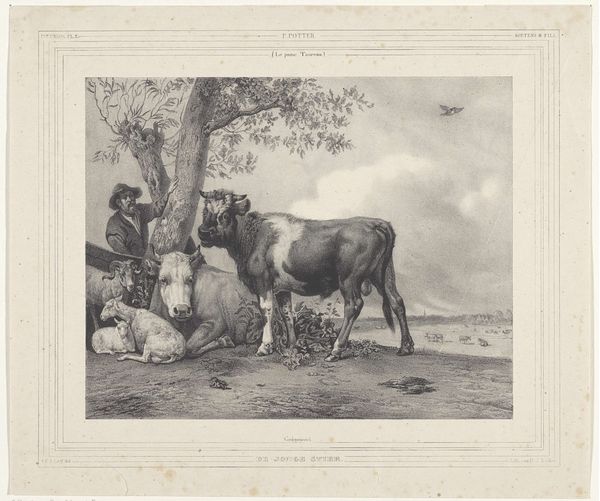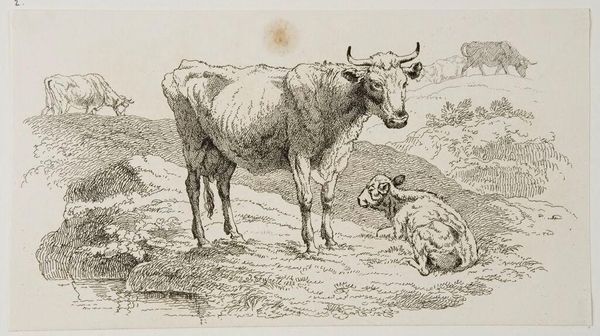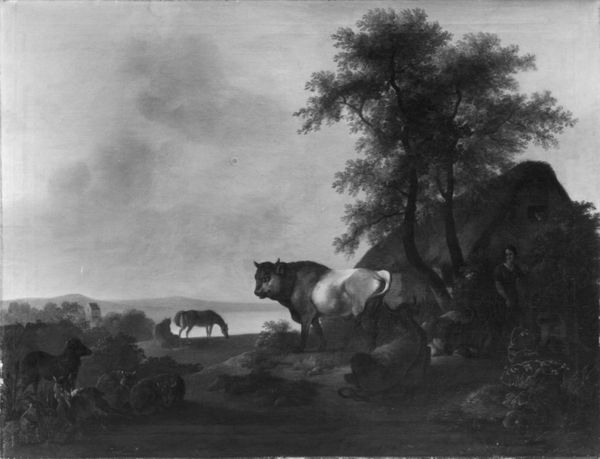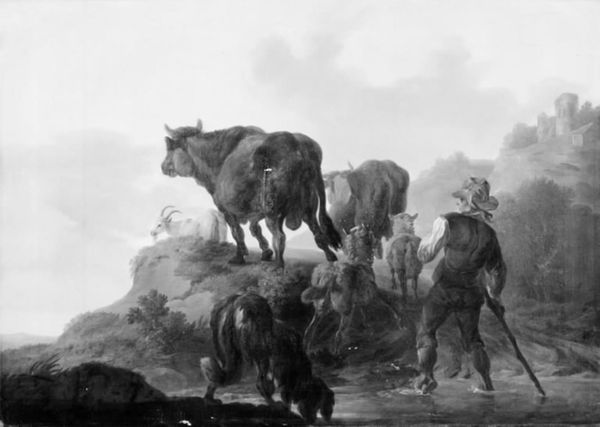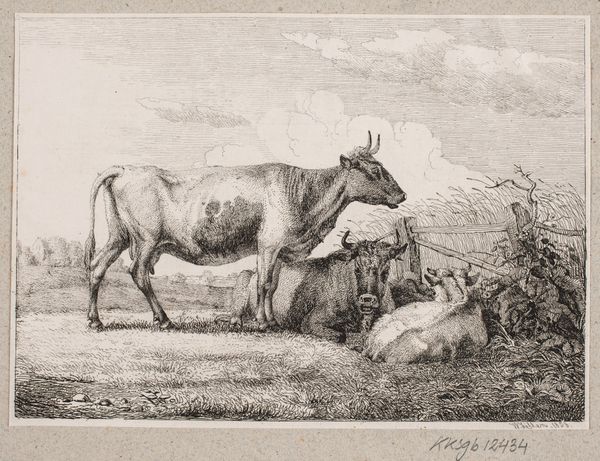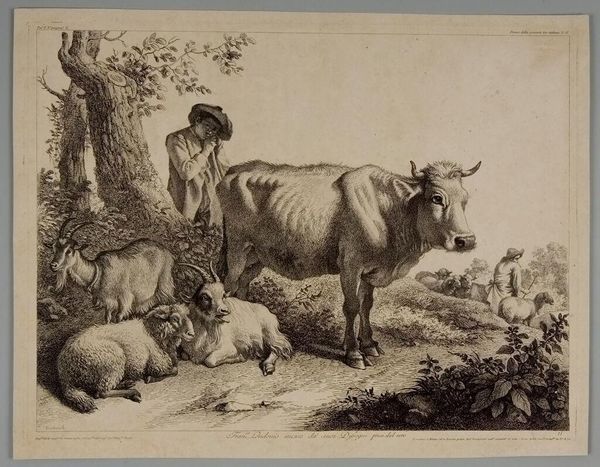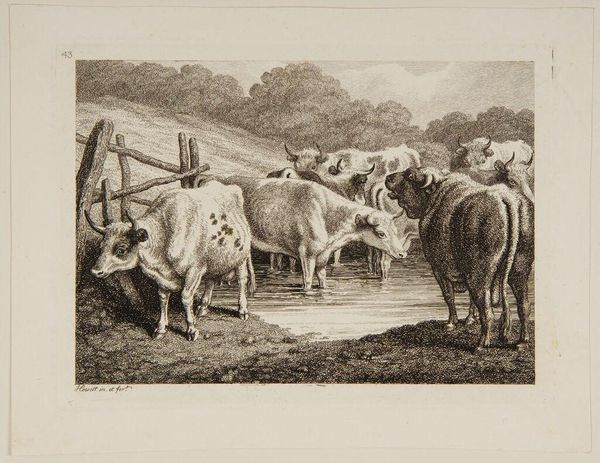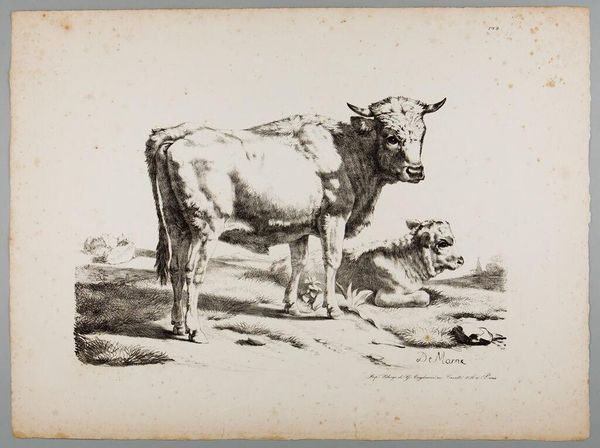
painting, oil-paint, wood
#
baroque
#
dutch-golden-age
#
painting
#
oil-paint
#
landscape
#
figuration
#
black and white
#
monochrome photography
#
wood
#
genre-painting
#
monochrome
#
realism
#
monochrome
Dimensions: 42.5 cm (height) x 48.5 cm (width) (Netto)
Curator: Here we have Albert Jansz Klomp's "Cattle in the Field," painted in 1663. It's an oil on wood piece, currently residing here at the SMK. Immediately, the textures in that monochrome depiction jump out at me; the density and the tangible quality of rural life. Editor: The use of light is quite remarkable. There is an interesting dance between vulnerability and strength in the gaze of the animals depicted. What might that say? Curator: Well, if we think about it materially, livestock were, quite literally, capital for Dutch society during the Golden Age. Depicting them so prominently acknowledges their economic weight. Also consider the artist's hand and eye at work. What kind of workshop or training was behind rendering of a mundane landscape with this quality? How were painting supplies impacting price points for landscapes like this? Editor: Good point. The animals here are also imbued with religious symbolism - the lamb as a symbol of innocence and sacrifice, the goat with darker, more mischievous associations. How do those familiar emblems shape how the painting functions as an idealization of country life? The positioning is interesting to me; the dominant figure of the cow has its eye directed, it is an interesting touch for something painted in the Dutch Golden Age. Curator: And what about the consumption habits? A prosperous society with the monetary freedom to purchase art for personal aesthetic enhancement, to reinforce social positionality via the type of art one owns and the genre of life it reflects or idealizes. This touches on social, political, and economics of visual media at the time, its relationship to commerce and production, its circulation amongst markets and vendors. We should talk about Klomp's signature, is it something he always does? And how does he learn that painting skillset in the first place? Editor: Indeed. Those factors were definitely at play. What stands out to me is the contrast: idyllic surface versus underlying realities and anxieties reflected through established cultural codes. Thanks for expanding our thoughts here. Curator: Thanks for enriching the experience, it does feel grounded through the symbolic analysis as well.
Comments
No comments
Be the first to comment and join the conversation on the ultimate creative platform.
